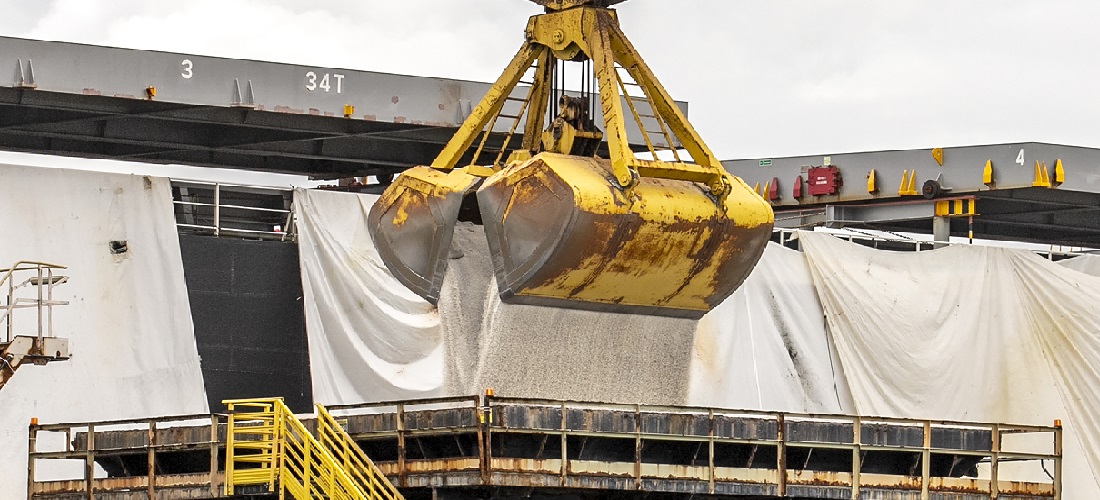
Logistical hurdles add 21% to fertilizer transportation costs
Jan, 22, 2024 Posted by Gabriel MalheirosWeek 202404
Brazil, one of the world’s largest food producers, is also increasingly dependent on fertilizer imports and faces logistical obstacles in meeting its needs, increasing production costs. A study by the Logistics Research and Extension Group of the “Luiz de Queiroz” School of Agriculture (EsalqLog/USP) shows that in 2010 60% of the national demand for fertilizers was met by the international market. In 2022, this figure increased to more than 80%.
The study shows that during this period, the cost of purchasing inputs increased due to the greater use of road transport (86%) to the detriment of rail transport (13.6%) in the domestic market. According to EsalqLog, which monitors 16 routes in the country, the average price of transporting the input has increased by 21% over these 12 years, adjusted by inflation.
The movement of fertilizers by rail in the country from 2010 to 2022 increased by 23%, reaching 6 million tonnes. However, this increase did not mean a reduction in dependence on road transport, as the demand for fertilizers grew by more than 80% over the same period. In 2010, 32% of imported fertilizers were transported by rail, compared with 16% in 2022.
“Brazil has increased the volume transported by rail in recent years, consolidating new corridors. However, fertilizer consumption has increased more than the volume transported by rail, which has not led to a diversification of the transportation system. On the contrary, the share of trucks has increased,” said Thiago Guilherme Péra, coordinator of EsalqLog.
The average distance for transporting fertilizers in the country is 800 kilometers. “Consequently, significant increases in fuel prices have a strong impact on the cost structure of truck transportation,” said Mr. Péra, who conducted the study with Dr. José Vicente Caixeta Filho, visiting professor at the University of Illinois Urbana-Champaign and former coordinator of EsalqLog.
The price of road freight for fertilizer is very seasonal. Typically, peaks occur during periods of high imports, between September and October, while troughs occur between February and April, a time of significant grain exports.
According to the study, in 2010 Brazil imported about 15 million tonnes of fertilizer and the domestic industry produced 9 million tonnes, resulting in a supply of 24 million tonnes and a 62% dependence on imports. Since 2019, the country increased its dependence on imports, exceeding 80%, until reaching a peak in 2021, with 86% of total consumption.
This situation is explained by the closure of some factories and the increase in grain production, which increased from 150 million to more than 320 million tonnes during this period.
These inputs, which enter the country mainly through the southern ports, are taken to blenders in different states. The five main ports responsible for 77% of fertilizer imports are Paranaguá (28%), Santos (20%), Rio Grande (12%), São Luís (9%), and São Francisco do Sul (8%).
The ports that gained the most market share during the period analyzed were Salvador (from 0.2% in 2010 to 5% in 2022), Belém (from 0.2% to 3.3%), São Francisco do Sul (from 1.3% to 8.1%) and São Luís (from 4% to 8.6%). On the other hand, Paranaguá lost market share, from 41% to 28%, as did Rio Grande (from 17.7% to 12%).
According to the EsalqLog study, the Port of Santos, unlike its competitors, did not lose market share. On the contrary, it gained 4 percentage points.
According to the researchers, several factors explain the advance: the port of São Paulo received a new fertilizer import terminal with a direct rail connection; new rail terminals began receiving fertilizers from Santos; and there is a park of fertilizer blending plants near the port, which increased imports due to the increased demand for the input during the period.
Source: Valor International
Click here to read the original news piece: https://valorinternational.globo.com/agribusiness/news/2024/01/22/logistical-hurdles-add-21percent-to-fertilizer-transportation-costs.ghtml
-
Shipping
May, 15, 2023
0
Maersk completes divestment of Maersk Supply Service
-
Ports and Terminals
Dec, 22, 2022
0
Lula administration takes on mission to decide fate of Port of Santos biddings
-
Automotive
Oct, 07, 2022
0
Brazil vehicle exports rise 20.7% in September to 28,500 units
-
Other Cargo
Oct, 05, 2021
0
Brazilian boat exports boost SC shipyard sales


